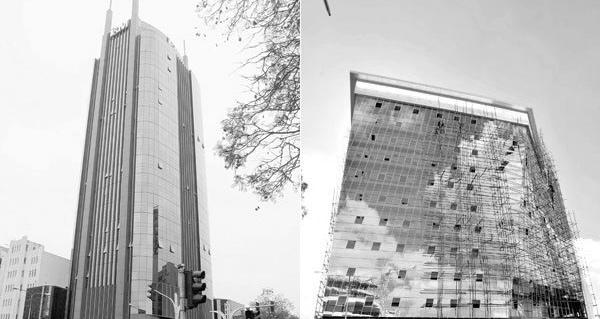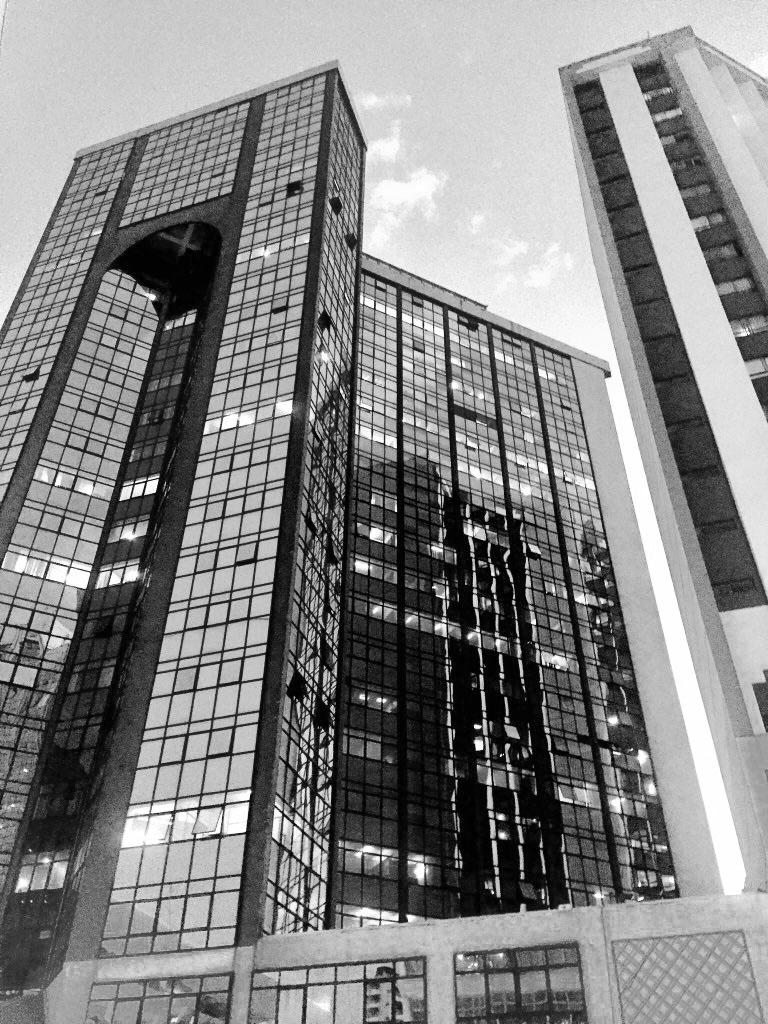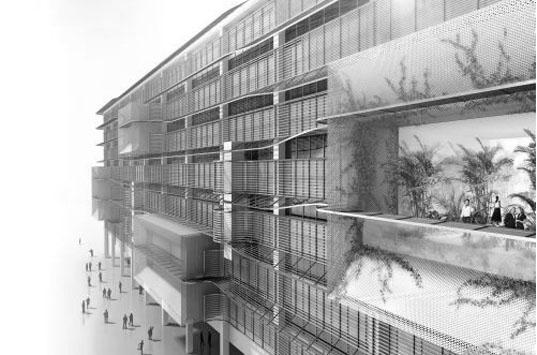
5 minute read
The Glass Fad
Trouble or Worth It?
Glass buildings have become very popular not because they provide excellent views and allow maximum light into a building but because they demonstrate how far we have come in the development of materials (Musau, 2015) . Most designers argue that the glass skyscrapers reflect architecture in the present and most clients feel relevant having their buildings covered in glass. I myself used to be fascinated with fully glazed buildings growing up,until I first learnt about the damage they are doing to our environment in my second year of university. My professor was very passionate about relaying the information of how buildings affect climate too. That got me thinking, why is it when we talk about climate change, we only think about the damage caused by human activities and not the buildings we ‘live’ in every day. From this brief encounter of learning about building science and passive cooling and heating technologies, I slowly came to realize that our ancestors had this right. They had been designing climate responsive buildings for the longest time and industrialization came and ruined it for everyone. The most talked about topic in the world today is climate change and has been situated within the context of reducing global temperatures by 2°C or we will have no resources left for us on the planet let alone future generations. Yet, come to think of it, the buildings we occupy are the major contributors to the ever-heating landscape we live in. The cycle is the same: the more it gets hotter, the more we use our air conditioners and the hotter it becomes and the stronger and more energy dependent our air conditioners become. Did you know that the refrigerant in air conditioners is the main contributor to carbon emissions that has led to global warming and the depletion of the ozone layer?
Advertisement
Glassiosis In this digital age, designers face the dilemma of clients opting for buildings that are designed in various climates as they bring these images from the internet and suggest that we should design the same in their home climates. But the fact remains, a building built in a temperate climate will not do well in a tropical one. Moreover, if you do not employ the basic passive and active techniques, the building will have a high carbon footprint, high running costs due to cooling of the building using air conditioning and primarily have low thermal performance, therefore making it energy inefficient.
by Nina NDICHU
Figure 1: From the imposing I&M Building (left), which glitters in the warm Nairobi sun to the newly constructed Sifa Towers (right), Nairobi clearly sees a future in glass. Source: NATION NEWSPAPER
Nairobi has followed this trend. Competing to join the ranks of global cities, like New York, Dubai, and London, Nairobi has over 50 new skyscrapers with 80 stories of glazed curtain walls. Architects and designers are no longer looking to design climate responsive buildings that were evident in the 1960s. Instead, they have unanimously decided that being modern means the building needs to be glazed, putting aside their design liberties to follow the global trend. This is hurting the environment and the occupants as the facades are designed not to be functional automatically,making the end user depend on air conditioning. In Nairobi, most of the buildings have 20% occupancy, offices have now moved to apartment buildings because they are more comfortable than the new high-rise office towers and in the end the developers and owners lose a fair share of money keeping up the ruse that glazed building means modern building.

For Climate’s Sake Whilst there is increasing recognition that green buildings outperform conventional buildings in terms of a variety of environmental, economic and social indicators, much less is known about how green-building initiatives might be incorporated into existing buildings, which make up the bulk of the market. If the challenge of climate change is to be successfully addressed, the vast majority of older buildings which were designed without climate consideration would need to be retrofitted. Unfortunately, retrofitting existing buildings is significantly more difficult than creating a new green building from scratch. For example, in existing multi-tenant commercial buildings, any sustainable retrofit or technology upgrade requires the cooperation and participation of a wide range of stakeholders (i.e., owners, managers, occupants and contractors) who often must reside in the building during the potentially disruptive retrofitting process. Moreover, whilst there is the technological capacity, issues such as cost and tangible demand from consumers, organizations and policy-makers will determine the priority the industry places on retrofitting existing buildings for sustainability (Miller, 2008). Designing retrofits for existing buildings to include sustainability initiatives will reduce operation costs and negative environmental impacts.

Communi-who? We know certain areas are more susceptible and vulnerable to the effects of climate change. Communities should come together in a large think tank and establish different building materials that can be used for construction as an alternative to glass in order to make them perform better. Sustainable retrofitting can include photovoltaic glass for the façades if the client wants to retain the ‘modernity’ look and feel of glass. This can ensure that the building is self-sufficient and generating energy instead of only exhausting it. The implementation of preliminary architectural and energy efficiency improvements in buildings would have the additional benefits of increasing community wellness and have positive social effects and incentivizing users on the awareness of energy consumption. At the same time, energy efficiency implementations targeted at these vulnerable neighborhoods can also improve indoor air and indoor environmental quality, which correspond to reducing the overheating risk assessment of a building. In addition to direct energy consumption reduction, energy use potentialities of retrofitting measures can provide indirect economic benefits.
The Future is NOW Optimizing energy efficient retrofitting measures for mass and large-scale developments are of crucial importance; thus, policies for construction need to be formulated and employed into the building code to ensure everyone has access to high energy efficient and thermal performing buildings. We need to carb the current certifications used for energy efficiency, as they have become too commercialized and are not at all inclusive. Designers and developers alike have tweaked the performance of buildings only to get LEED certified but do not necessarily construct it to meet those certifications. Undoubtedly, as consumption patterns change and social standards shift, the adjustment of eco-efficiency will need to adjust our eco-retrofit priorities. 9





